#Aythya valisineria
Text
BOTD: Canvasback

Photo: Carol Foil
"This big diving duck, the largest of its genus, is wary and swift in flight, earning the respect of sportsmen. It is a characteristic bird of prairie marshes in summer and saltwater bays in winter. The Canvasback dives for its food, mainly the bases and roots of plants growing underwater. Its specific name of valisineria refers to the technical name of wild celery, an aquatic plant that is among its favored foods."
- Audubon Field Guide
#birds#canvasback#birds of north america#north american birds#ducks#waterfowl#canvas back#birds of the us#birds of canada#birds of mexico#birding#birdblr#birblr#bird of the day#Aythya valisineria
49 notes
·
View notes
Photo
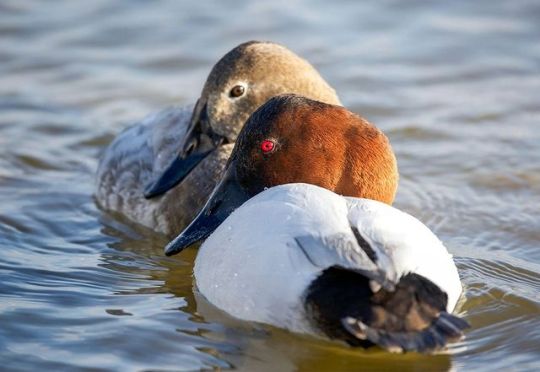
Canvasback
13 notes
·
View notes
Photo

A new variant has been added!
Canvasback (Aythya valisineria)
© Barry Kent MacKay
It hatches from aquatic, attractive, black, bodied, brown, dark, distinctive, dull, large, long, red, reddish, triangular, unique, and white eggs.
squawkoverflow - the ultimate bird collecting game
🥚 hatch ❤️ collect 🤝 connect
0 notes
Text

[2030/11056] Canvasback - Aythya valisineria
Order: Anseriformes
Family: Anatidae (ducks, geese and swans)
Subfamily: Anatinae (dabbling ducks)
Photo credit: Andrew Simon via Macaulay Library
74 notes
·
View notes
Photo
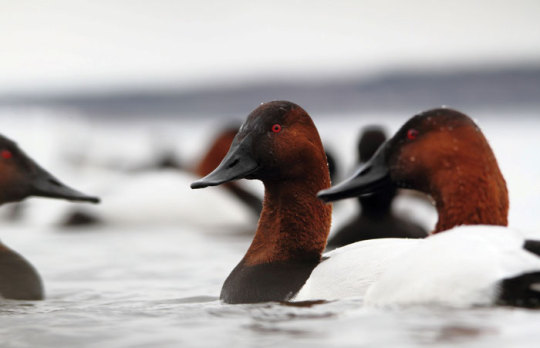
Waterfowl Wednesday
[x]
23 notes
·
View notes
Photo

Aythya valisineria by cetch1
#bird#birds#animal#animals#biology#nature#wildlife#fauna#Anseriformes#Anatidae#Aythya#Aythya valisineria
36 notes
·
View notes
Photo

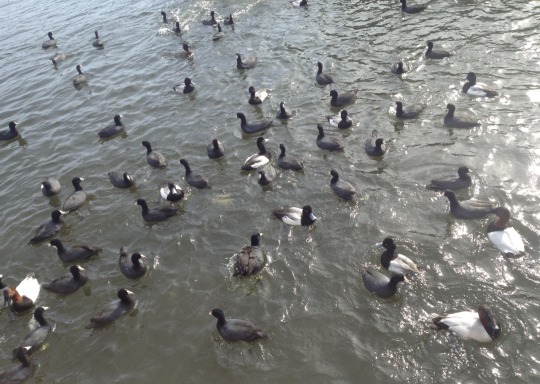
#american coot#fulica americana#canvasback duck#aythya valisineria#lesser scaup#aythya affinis#lake merritt#waterfowl#oakland
4 notes
·
View notes
Photo
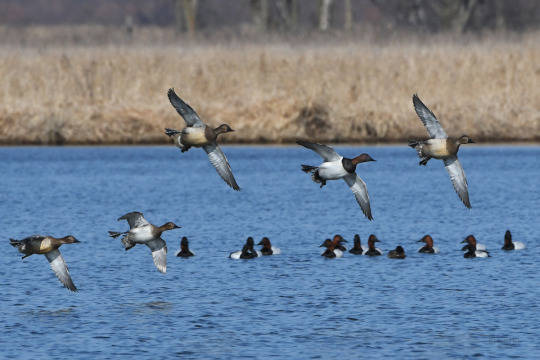
Canvasback
A group of strong-flying Canvasbacks (Aythya valisineria) made their final approach before landing amidst a small raft of fellow divers.
152 notes
·
View notes
Photo
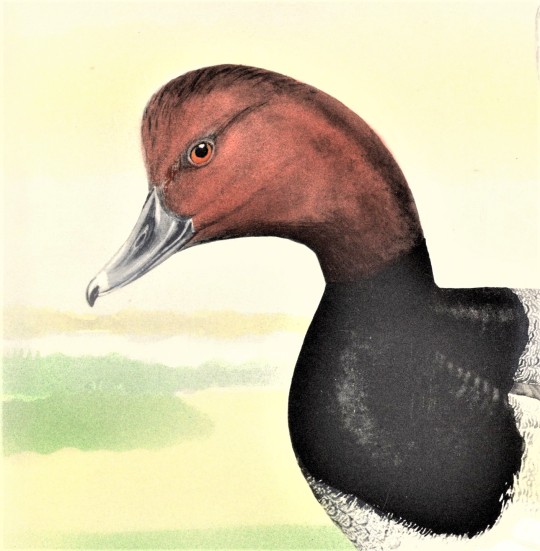

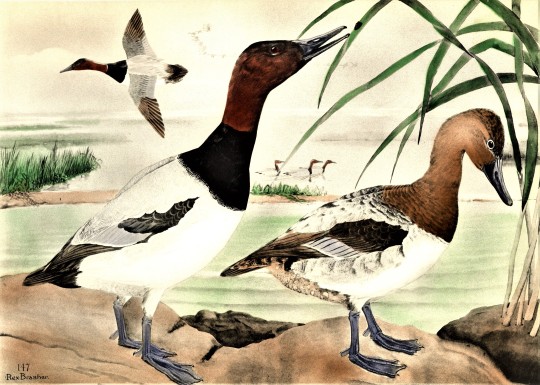
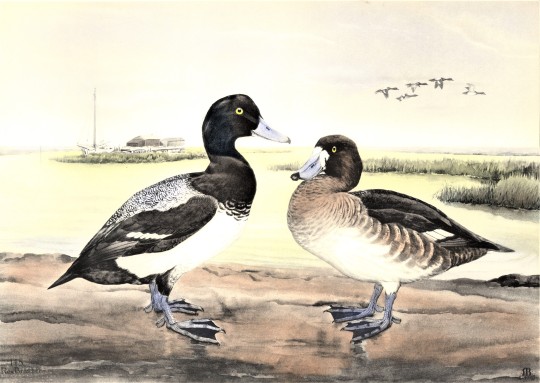
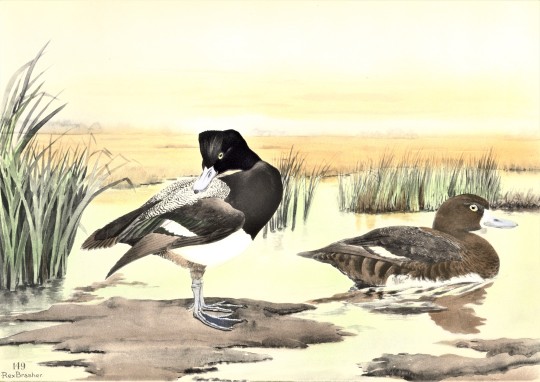
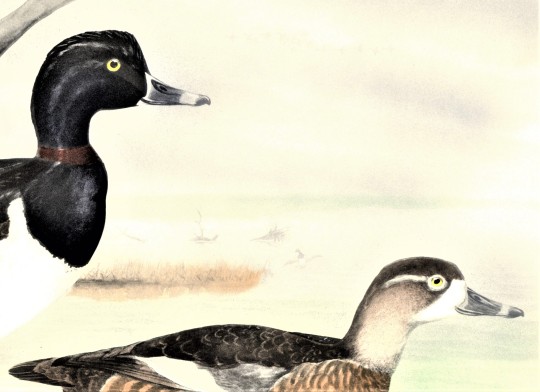
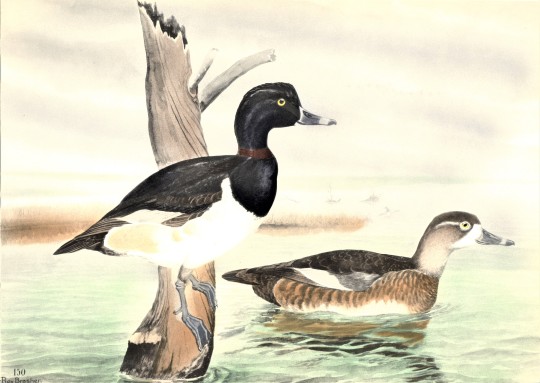
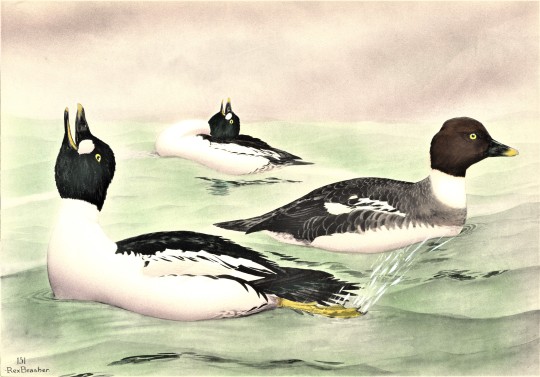

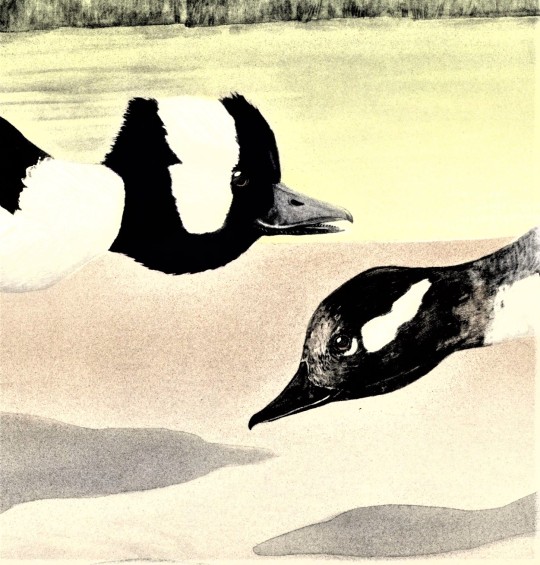
A Diving Duck Feathursday
Last week we brought you geese from our green rooftop. This week we bring you ducks from Rex Brasher’s massive, limited-edition, 12-volume set Birds and Trees of North America, self-published in Kent, Connecticut, between 1929 and 1932, containing thousands of hand-colored reproductions of Brasher’s paintings!
Ducks essentially can be divided into two groups: the divers that dive beneath the surface of the water to feed, and the dabblers that feed mainly by ducking their heads under the water to gain access to food near the surface. Today we focus on diving ducks that are common to our Wisconsin waters. They are, from top to bottom:
1.) Redhead (Aythya americana), detail and full print. Redheads are fairly common summer residents in eastern Wisconsin but we are unusually just a migratory way station, as they prefer to breed further north. We sometimes see them along lake Michigan, but a great place to see them is a bit further northwest in Horicon Marsh.
2.) Canvasback (Aythya valisineria), full print only. Like the Redhead, Wisconsin does not sustain a regular breeding population of Canvasbacks, but the state is an important location for Canvasback migration, especially along the Mississippi and the Horicon Marsh.
3.) Greater Scaup (Aythya marila), full print only. The Greater Scaup, along with their smaller cousins the Lesser Scaup, prefer cold temperatures and breed in the tundra of northern Canada and Alaska. During migration, however, scaup can gather into massive groups on Wisconsin waters, including the Mississippi River, Lake Superior, Lake Michigan, Lake Winnebago, Lake Poygan, and Lake Mendota.
4.) Lesser Scaup (Aythya affinis), full print only. Aside from their relative size, it's sometime difficult to distinguish the Lesser from the Greater, especially as they congregate together. But side by side, the Greater is about one-fifth larger than Lesser Scaup, and their heads are more round with an iridescent green sheen as opposed to purple of the Lesser. Also, a black nail on the tip of their bluish bill is more prominent in Greater Scaup.
5.) Ring-necked Duck (Aythya collaris), detail and full print. Ringnecks are more easily distinguished by the white rings on the bills and the feathers at the base of the bill, than by the cinnamon ring on its neck, after which it is named. We've never seen them here in southern Wisconsin, but they do breed around the waters of the Green Bay and Lake Superior.
6.) Common Goldeneye (Bucephala clangul), full print only. While Wisconsin generally does not sustain a breeding population, Goldeneyes are yearlong residents of Wisconsin and we'll find them in Lake Michigan even during the coldest months of winter.
7.) Bufflehead (Bucephala albeola), full print and detail. Related to the Goldeneye, Buffleheads also tend not to breed in Wisconsin, but are also yearlong residents of our state, and we have seen them on Lake Michigan and the Horicon Marsh.
Find out more about Rex Brasher’s work, and/or view other posts from this set.
View more Feathursday posts.
#Feathursday#ducks#diving ducks#Rex Brasher#Birds and Trees of North America#Redhead ducks#Canvasbacks#scaups#Ring-necked Ducks#Goldeneyes#Buffleheads#hand colored plates#hand-colored prints#birds
35 notes
·
View notes
Photo

Canvasback -- Male (Aythya valisineria); Albuquerque, NM, Tingley Beach Park [Lou Feltz] by deserttoad I have mainly distant shots of a male Canvasbacks in my files. Diving ducks are usually offshore some distance in the deeper water. With this species within acceptable camera range I took full advantage of this opportunity to flesh out my files. The "ski jump" head profile is ideal for IDing this species. In full breeding rigalia the head colors will be a more vivid red. This is one of our easier ducks to ID... especially the males. IMG_4975; Canvasback https://flic.kr/p/2kRqaYi
3 notes
·
View notes
Video
From the archives
Via Flickr:
Canvasback (Aythya valisineria)
0 notes
Text
List Of Top 15 Fastest Birds Around Us With Details
We all need fastest bikes or fastest cars to enjoy great speeds. But their are birds which are born with ultimate speeds. Here is the list of top 15 fastest birds.
Top 15 Fastest Birds Are
Peregrine Falcon, (Falco peregrinus):- 242mph
Perehrine Falcon is not only one of the fastes birds but also a fastest living creatures of the world. In every continent leaving Antarctica we can see peregrine. The adult Peregrine are having long pointing wings moreover with powerfull muscels.
Golden Eagle, (Aquila chrysaetos):- 200mph
Golden Eagle can dive upon their prays from a great extent of hights. Moreover during dive they reach at a maximum speed of 200mph. These are the largest birds of prey. Furthermore their lenght are between 30 to 40inch, it weights about 7kg. Moreover having a wingspan of 2.3m.
Steppe Eagle, (Aquila nipalensis):- 186mph
Steppe Eagle is a raptor similar to all eagles. These are Endangered species. Steppe are about 24 – 32inch in lenght, moroever having wingspan of 2.4-7.1ft. While in Steppe Eagle females are slightly larger than male. With the top speed of 186 these are on the 3rd place in list of top 15 fastest birds.
Gyrfalcon, (Falco rusticolus):- 130mph
Gyrfalcon are the largest falcon of the world. Morever these are well known for their fastest dive and long pointing wings. Gyrfalcon wright about approxly 1.3kg and having a length between 20-24inch. Furthermore these are best in controling their exceptional fastest dive.
Red-Tailed Hawk, (Buteo Jamaicensis):- 118mph
Red-Tailed Hawk are on the 5th position in list of top15 fastest birds having an spectacular speed of 118mph. These are most widely scatter in the America.
White-Throated Needletail, (Hirundapus caudacutus):- 106mph
White-Throated Needletail is also known as Spine-Tailed Swift. These are having top speed of 106mph. Moreover these are mostly available in New Guinea. Furthermore these are small bird having length of 11.5cm, round tail but very fast flight. But during bend it reach a seep of 186kmh.
Eurasian Hobby, (Falco subbuteo):- 100mph
Eurasian Hobby are mostly aailable in open woodlands, near river edges and also in forest across Africa, Asia and Europe. Moreover these are the smallest member of the Falcon Family. Furthermore Eurasian Hobby migrate to spent winters in Central Africa and Southern Asia.
Frigrate Bird, (Fregata):- 95mph
Figrate Bird are found in tropical regions of the world. Moreover these are a largest sea birds. Having a wingspan of 2.3m. Furthermore these birds can fly for weeks. They only comes to land for breeding and rest.
Spur-winged Goose, (Plectropterus gambensis):- 88mph
Spur-winged Goose are found in wetlands of Sub-Saharan Africa. These are largest waterfowl in Africa. Moreover having a wingspan of 1.5 – 2meters, furthermore having lenght between 35 – 45 inch.
Red Breasted Merganser, (Mergus serrator):- 81mph
Red Breasted Merganser are a large diving duck with long thin bill. Moreover these can be visible in large lakes, rivers and the oceans in North America, Greenland furthermore Europe.
Grey Headed Albatross, (Thalassarche Chrysostoma):- 78.9mph
Grey Headed Albatross is having a bluish grey head and neck with black grey tail. Moreover are the largest seabird that breed mainly in South Atlantic part of Southern Ocean. These are on the 11th place in the list of 15 fatsest birds with speed og 78.9mph and moreover wingspan of 2.2meters.
White-Rumped Swift, (Apus caffer):- 77mph
White-Rumped Swift are having top speed of 77mph. Moreover these breed in much of Sub-Saharan Africa and expand towards Morocco and Southern Spain.
Canvasback, (Aythya valisineria):- 73mph
Canvasback are the migrating birds. Moreover are the diving duck which inhibits in Swamps near North America. Furthermore these migrating birds start their migration at winters towards Great Lakes between boders of U.S and Canada. These use to migrate in V shape formation.
Eider, (Somateria mollissima):- 73mph
Eider are the largest seaducks in genus Somateria. These are having the top speed of 73mph.
Teal, (Anas crecca):- 69mph
Teal are having high aspect ratio of wing which provide top speed of 69mph.
This slideshow requires JavaScript.
Image Source: Google Images
LIST OF TOP 15 FASTEST BIRDS AROUND US WITH DETAILS List Of Top 15 Fastest Birds Around Us With Details We all need fastest bikes or fastest cars to enjoy great speeds.
#America#Anas crecca#Apus caffer#Aquila chrysaetos#Aquila nipalensis#Asia#Aythya valisineria#Buteo Jamaicensis#Canada#Canvasback#Eider#Endangered species#Eurasian Hobby#Europe#Falco peregrinus#Falco rusticolus#Falco subbute)#Fregata#Frigrate Bird#Golden Eagle#Greenland#Grey Headed Albatross#Gyrfalcon#Hirundapus caudacutus#Mergus serrator#Migrating Birds#Morocco#New Guinea#North America#Peregrine Falcon
0 notes
Text
Aythya

Lesser Scaup by Shersey DC, CC BY 2.0
PLEASE SUPPORT US ON PATREON. EACH and EVERY DONATION helps to keep this blog running! Any amount, even ONE DOLLAR is APPRECIATED! IF YOU ENJOY THIS CONTENT, please CONSIDER DONATING!
Name: Aythya
Status: Extant
First Described: 1822
Described By: Bole
Classification: Dinosauria, Saurischia, Eusaurischia, Theropoda, Neotheropoda, Averostra, Tetanurae, Orionides, Avetheropoda, Coelurosauria, Tyrannoraptora, Maniraptoriformes, Maniraptora, Pennaraptora, Paraves, Eumaniraptora, Averaptora, Avialae, Euavialae, Avebrevicauda, Pygostylia, Ornithothoraces, Euornithes, Ornithuromorpha, Ornithurae, Neornithes, Neognathae, Galloanserae, Anseriformes, Anseres, Anatoidea, Anatidae, Anatinae, Aythyini
Referred Species: A. valisineria (Canvasback, Extant), A. ferina (Common Pochard, Extant), A. americana (Redhead, Extant), A. collaris (Ring-Necked Ducks, Extant), A. australis (Hardhead, Extant), A. baeri (Baer’s Pochard, Extant), A. nyroca (Ferruginous Duck, Extant), A. innotata (Madagascar Pochard, Extant), A. novaeseelandiae (New Zealand Scaup, Extant), A. fuligula (Tufted Duck, Extant), A. marila (Greater Scaup, Extant), A. affinis (Lesser Scaup, Extant), A. shihuibas (Extinct), A. denesi (Extinct)

Ferruginous Duck by Francis C. Franklin, CC BY-SA 3.0
Aythya is a large genus of diving ducks from all over the world, including many different species including Scaups and Pochard. While most species in this genus are not threatened with extinction, a few of them are critically endangered, especially those in insular environments. The oldest occurrence of this genus is from the late Miocene, and as such it appears to be about 12 million years old, from the Tortonian age of the Miocene of the Neogene, until today. Almost all of these ducks are associated with marine environments, given their diving ecology.

A. denesi by Scott Reid on @drawingwithdinosaurs
A. shihuibas is one of two known extinct species in this genus, from the Late Miocene of China. A. denesi is another species, hailing from the late Miocene of Hungary, specifically the Polgárdi 4 formation in Feér County. There is also an Early Pleistocene member of this genus from Turkey that remains undescribed. These extinct members of the genus are, in general, known from fairly limited material. A. denesi is known from fairly limited material of the humerus, showing it was very similar to living members of this genus of diving ducks, showing advanced structures typical of this genus, but still retaining some of the more plesiomorphic (re: ancestral) features of ducks in general, including some fairly “primitive” characteristics. This shows that these diving ducks were still transitional in their evolution in the late Miocene, and it was only recently that modern forms for this genus were really starting to appear.

Canvasback by Dick Daniels, CC BY-SA 3.0
The Canvasback, A. valisineria, is an unthreatened species of this genus primarily from North America. It breeds in Canada and the Western United States, and spends the winters in most of the rest of the United States and Mexico. The largest species of this genus, it is about the size of a mallard, weighing up to 1.6 kilograms, though it is more compact than the mallard. The males have ruddy brown heads with black necks and white bodies, while the females are more brown all over. They nest primarily on water near prairie marshes, though some breed in subarctic river deltas. They lay about 5 to 11 eggs at a time. They feed primarily on seeds, buds, leaves, tubers, roots, snails, and insects, mainly by diving but also by dabbling, given their wide variety of habitats - they are highly migratory ducks!

Common Pochard by Tony Hisgett, CC BY 2.0
The Common Pochard, A. ferina, is a species vulnerable to extinction from Europe and Asia. They are migratory birds as well, spending winter in Southwestern Europe, and are commonly found breeding in the northern British Isles. The males have distinctive red heads, black necks, and white bodies, while the females are primarily brown and actually make growling sounds. They form very large flocks, often mixed ones, and feed by both diving and dabbling on aquatic plants, molluscs, insects, and even fish. They usually feed during the night. Due to urbanization and overhunting, their populations are currently on decline.

Redhead Duck by Kevin Bercaw, CC BY 3.0
The Redhead Duck, A. americana, is a nonthreatened species from North America, with males once again very distinct due to the bright red heads and greyish-black bodies. They spend the winter in Southern North America, and then breed in the Western United States and Canada, migrating between these two locations. They are very well adapted for underwater foraging, with legs far back on their bodies to aid in diving, but making land walking extremely difficult. They feed primarily on gastropods, molluscs, and insects, and will eat plants during the winter as well. They prefer living in wetland environments, especially ones with deep enough water for vegetation for their breeding habitat. They do flock together on lakes and migrate in pairs, with elaborate courtship rituals involving the males kinking their necks and stretching them for display, making calls until the female shows reciprocation. They build nests in thick plant material, and actually breed in very social environments, laying eggs of up to 7 young.

Ring-Necked Duck by Dan Pancamo, CC BY-SA 2.0
The Ring-Necked Duck, A. collaris, is another diving duck of least concern from North America, breeding in Canada and then migrating down to the Southwestern United States and Mexico for the winter season. Dark in color, the males have noticeable white beaks and bright white wings, with red rings around their necks, while the females are more dark in color all around (as shown above). They breed in wooded lakes and ponds, mainly in boreal regions, and then migrate to lakes, ponds, rivers, and bays in warmer climates. Though they form pairs for breeding, they usually separate after reproduction. About 10 eggs are laid per clutch, which are guarded by the mothers until the young can fly. They are omnivores, feeding on animals and plants throughout the year, though they prefer plants to animals as adults.
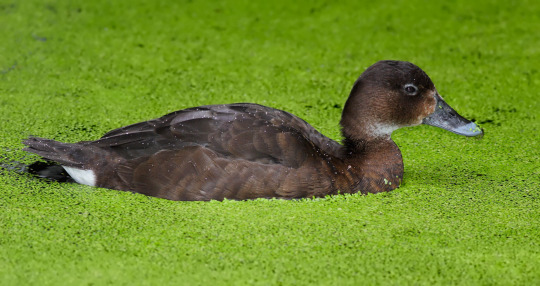
Hardhead, by Fir0002, GFDL 1.2
The Hardhead, A. australis, is the only diving duck known from Australia, not considered threatened with extinction due to its widespread presence in its range. They are common in the south-eastern portion of Australia, but also is found frequently near coasts. They are fairly nomadic ducks, except during drought years, when they disperse in search of water. They dive deeply for food, and are often found submerged fro even a minute at a time, eating a lot of small water animals. They enjoy living in lakes, swamps, and rivers, but are usually avoiding the coast, and are rarely found on land. They are actually fairly small ducks, and both males and females are brown, though the males have darker brown heads.

Baer’s Pochard by Dick Daniels, CC BY-SA 3.0
Baer’s Pochard, A. baeri, is a critically endangered diving duck from eastern Asia, breeding in Russia and China and migrating to Vietnam, Japan, and India for the winter months. It is a fairly small duck with long, distinctive beaks, and dark heads with brown bodies in the males. They are fairly similar in general to other members of this genus, breeding around lakes with rich vegetation and nesting in dense grass, typically favoring coastal wetlands and ponds. Unfortunately, its numbers are decreasing very rapidly, primarily due to wetland destruction and hunting, with up to 3,000 individuals killed every year.

Ferruginous Ducks by Erbanor, in the Public Domain
The Ferruginous Duck, A. nyroca, is a near-threatened species from Eurasia, with males and females being a chestnut brown, though the females slightly darker and duller than the males. They live in shallow bodies of fresh water, sometimes slightly salty ones. They breed from the Iberian Peninsula and the Maghreb south to Arabia, and then winters in the Mediterranean Basin and Black Sea. They are fairly social, and lay eggs in sites next to water. They both dive and dabble for food, feeding primarily on aquatic plants and insects. They are threatened due to habitat degradation by humans, mainly due to impoundment, drainage, and pollution. Non-native species also cause invasive competition for these birds.
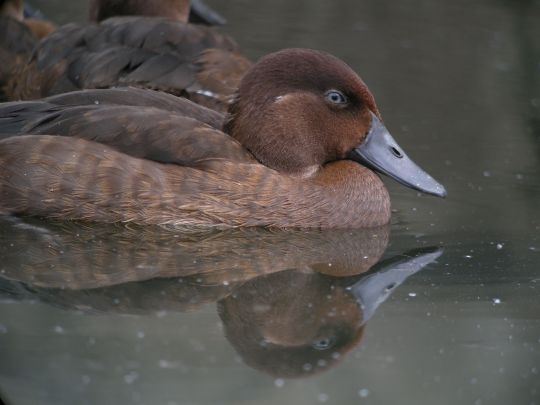
Madagascan Pochard by Frank Vassen, CC BY 2.0
The Madagascan Pochard, A. innotata, is a very critically endangered and rare species of diving duck, primarily known from Lake Matsaborimena in Madagascar. The population today is only around 80 individuals. They probably started an extreme decline in the mid-1900s, due to introduction of fish species that would kill pochard chicks. Rice cultivation has also lead to sharp population declines. The last sighting prior to recent times was a small flock in 1960; after that point, only a few more have been seen, though rescue plans are ongoing and captive breeding is working, with reintroduction on Lake Sofia planned for the near future.
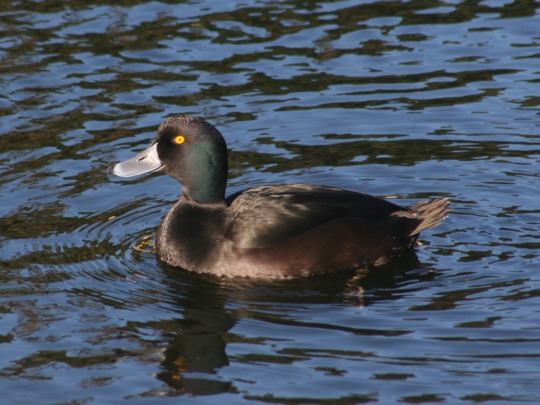
New Zealand Scaup by Tony Wills, CC BY-SA 3.0
The New Zealand Scaup, A. novaeseelandiae, is a nonthreatened species found throughout New Zealand and no one else. It is commonly called the Papango by the Māori. The Papango is a diving duck that can submerge for up to half a minute, looking for aquatic plants and small animals. They are found in deep freshwater lakes and ponds, and it doesn’t migrate. They lay eggs from October to March, up to eight in a clutch, which are incubated by the females and brought to suitable diving locations soon after hatching. Males have striking yellow eyes and greenish heads, while the females have a white patch on their faces and non-yellow eyes.

Tufted Duck by Andreas Trepte, CC BY-SA 2.5
The Tufted Duck, A. fuligula, is a small, nonthreatened diving duck, with up to one million birds out in the wild. It is found across all of the Northern Hemisphere, found as a winter visitor in the United States and Canada, though primarily known from Europe and certain localities in Asia such as the Indian subcontinent and Japan. They breed close to marshes and lakes with vegetation to conceal their nests, and they are also often found on coastal lagoons and ponds. They dive for food, feeding primarily on molluscs and insects. The males are all black except for white sides of their bodies, with clear little crests coming off of their heads; while the females are more brownish.

Greater Scaup by Calibas, CC BY-SA 4.0
The Greater Scaup, A. marila, is a commonly known diving duck from the Northern Hemisphere. This duck is so commonly known that decoys for hunting are often designed off of it, and their distinctive patterns are see frequently in duck-related things (my mom had bookends that looked like Greater Scaups). The males have dark green and black heads and striped backs, with distinct white and black patterns on their bodies. The females are mostly brown, but also have white patches on their sides. These ducks live in both North America and Eurasia, typically near coastal areas and around lakes. They eat aquatic molluscs, plants, and insects, which they get through diving. They weigh up to 1.4 kilograms, and are primarily associated with polar regions as well. They breed in the tundra and boreal forests, nesting on islands in northern lakes. The males make quick soft whistles to attract the females, which make raspy vocalizations in response. They form monogamous pairs, which nest close together, and after the eggs are laid the males leave the females. The females lay up to nine eggs, and the chicks are able to walk nearly immediately, though the female guards them until they’re able to fend for themselves. They are threatened by a variety of predators, including humans; they are also threatened by pollution; but there are conservation efforts ongoing, including banding programs.

Lesser Scaup by Connor Mah, CC BY-SA 3.0
And finally, the Lesser Scaup, A. affinis, is a smaller American species that is also not threatened with extinction. It breeds primarily in Canada, migrates across the Northern United States, and winters in the Southern United States, Mexico, and Central America. These ducks weigh up to 1 kilogram, and the males have black heads and striped bodies, while the females are primarily brown. Quieter ducks, they are frequently hard to distinguish from the Greater Scaup, especially since they often flock together. However, Lesser Scaups have darker irises than Greater Scaups. These ducks breed primarily in inland lakes and marsh ponds, and then migrate south. They forage through mud at the bottom of these waterways, and even will dabble rather than dive, though they primarily dive for molluscs and some aquatic plants. They nest in sheltered locations near the water, in shallow depressions lined with plants and down feathers, and lay up to 11 eggs in a nest, which are watched primarily by the mothers. Though not threatened yet, they are experiencing sharp declines in population, primarily due to decreasing breeding success, pollution, and habitat destruction, as well as climate change.
Buy the author a coffee: http://ko-fi.com/kulindadromeus
Sources:
https://en.wikipedia.org/wiki/Aythya
https://en.wikipedia.org/wiki/Canvasback
https://en.wikipedia.org/wiki/Common_pochard
https://en.wikipedia.org/wiki/Redhead_(bird)
https://en.wikipedia.org/wiki/Ring-necked_duck
https://en.wikipedia.org/wiki/Hardhead
https://en.wikipedia.org/wiki/Baer%27s_pochard
https://en.wikipedia.org/wiki/Ferruginous_duck
https://en.wikipedia.org/wiki/Madagascan_pochard
https://en.wikipedia.org/wiki/New_Zealand_scaup
https://en.wikipedia.org/wiki/Tufted_duck
https://en.wikipedia.org/wiki/Greater_scaup
https://en.wikipedia.org/wiki/Lesser_scaup
Zelenkov, N. V. 2016. Revision of Non-Passeriform Birds from Polgárdi (Hungary, Late Miocene): 1. Anseriformes. Paleontological Journal 50 (5): 83-86.
#aythya#duck#dinosaur#bird#pochard#birblr#palaeoblr#diving duck#paleontology#prehistory#prehistoric life#dinosaurs#biology#a dinosaur a day#a-dinosaur-a-day#dinosaur of the day#dinosaur-of-the-day#science#nature#factfile#Dìneasar#דינוזאור#डायनासोर#ديناصور#ডাইনোসর#risaeðla#ڈایناسور#deinosor#恐龍#恐龙
54 notes
·
View notes
Photo
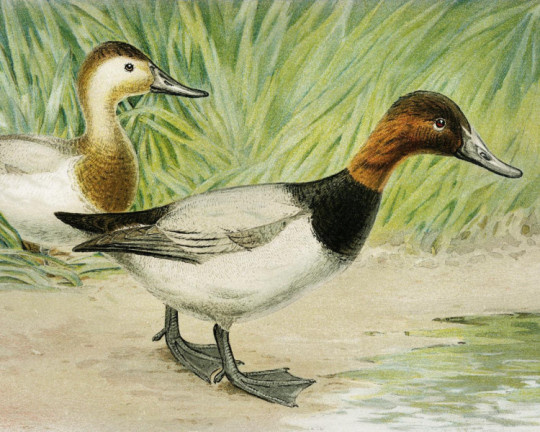
A new variant has been added!
Canvasback (Aythya valisineria)
© John Livzey Ridgway
It hatches from aquatic, attractive, black, bodied, brown, dark, distinctive, dull, large, long, red, reddish, triangular, unique, and white eggs.
squawkoverflow - the ultimate bird collecting game
🥚 hatch ❤️ collect 🤝 connect
0 notes
Photo
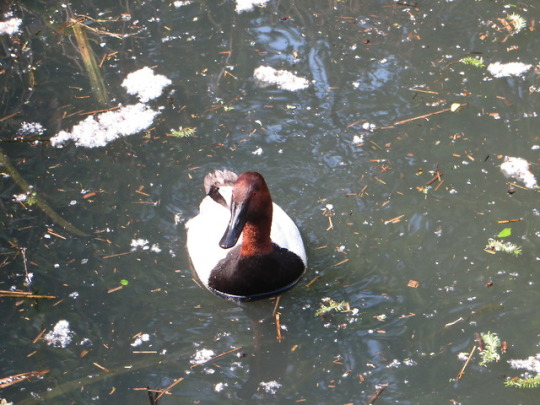
A lovely Canvasback Drake floating amongst the blossom.
These diving ducks feed on aquatic plants and invertebrates and they particularly favour wild celery. In fact, their scientific name - Aythya valisineria - derives from the scientific name for wild celery!
#ducks#cute ducks#canvasback#canvasback duck#drake#cute birds#cute animals#duckdaysout#duckfacts#wwt London Wetlands centre#uk#london
9 notes
·
View notes
Photo
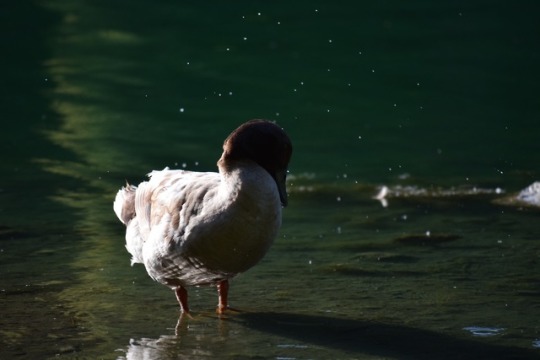
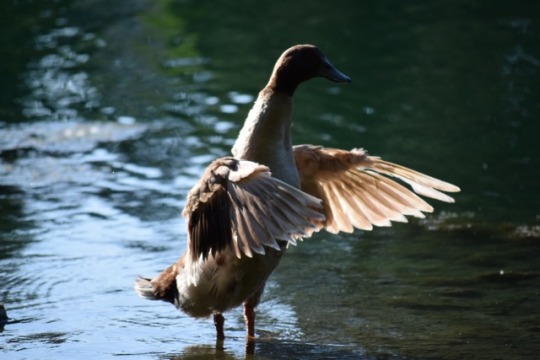
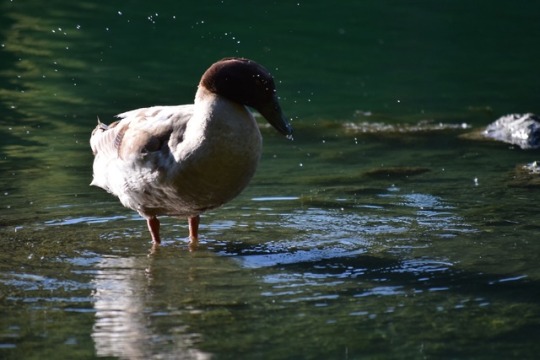
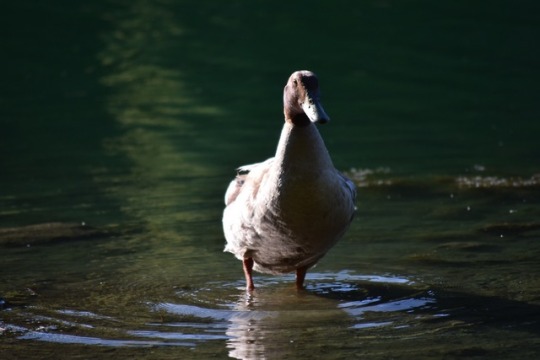
resident (canvasback duck (likely), Aythya valisineria)*
laurelhurst park, southeast portland
july 8th, 2019
*the oldest known canvasback lived to be at least 22 years old, before being shot by a hunter in 1991 (Cornell Lab of Ornithology)
0 notes
